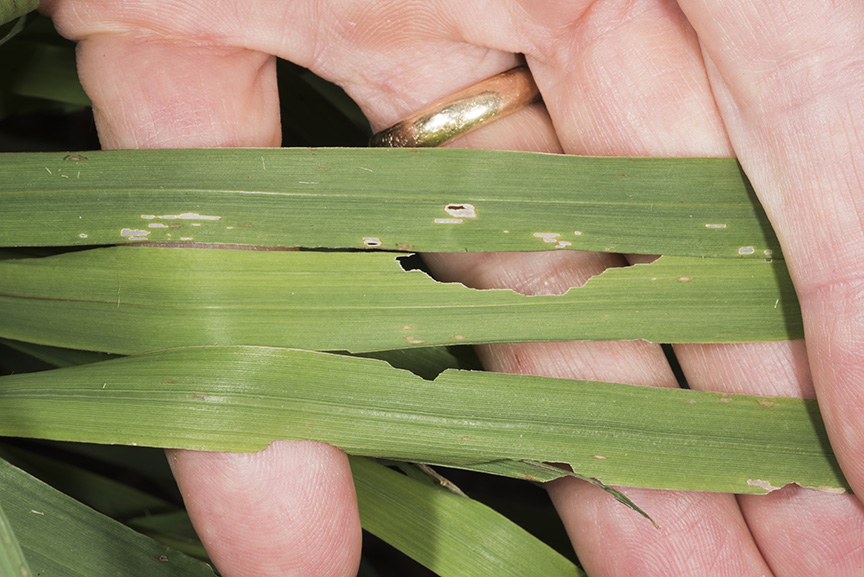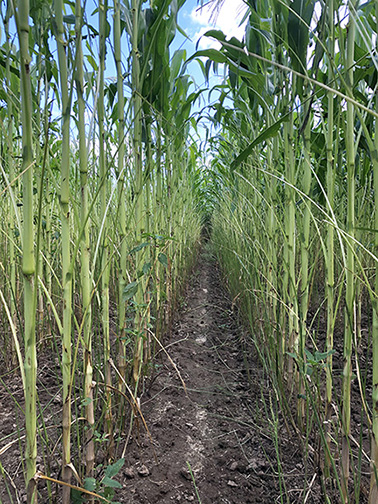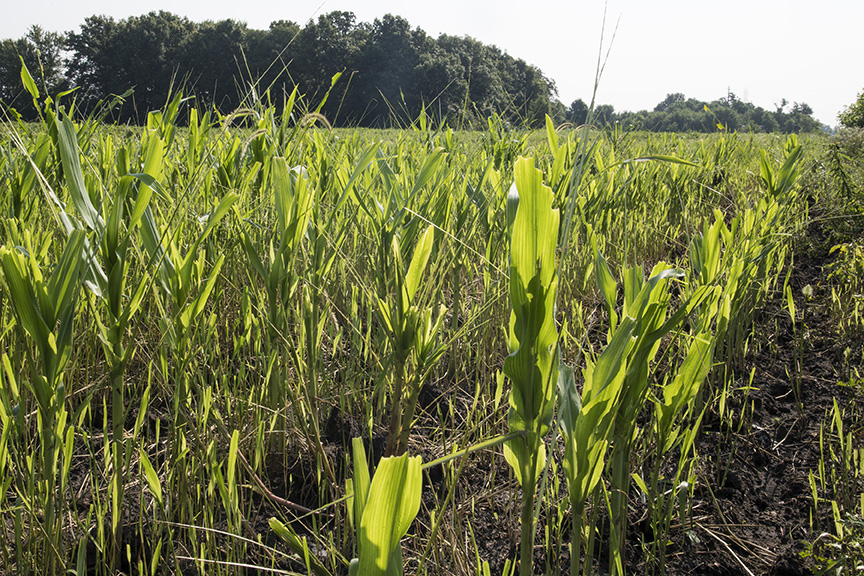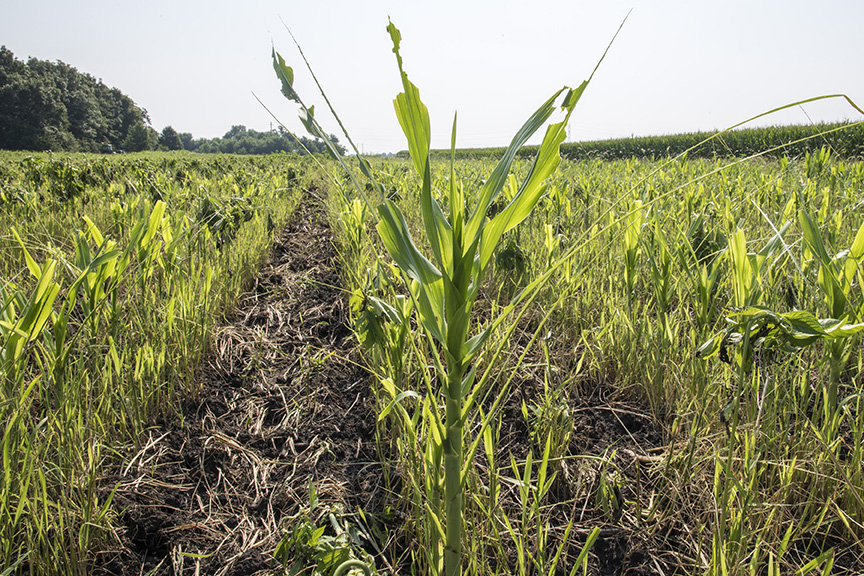
Over the past six weeks, armyworm moth captures at the Purdue Ag Research Centers (see accompanying “Armyworm Pheromone Trap Report”) have been variable.

Over the past six weeks, armyworm moth captures at the Purdue Ag Research Centers (see accompanying “Armyworm Pheromone Trap Report”) have been variable.

There have been multiple enquiries over the last week concerning corn leaves and forage grasses disappearing!

Still this week, dairy producers in extreme northern counties were losing forage grasses in their hay fields from armyworm.

In mid-June, we wrote in the Pest&Crop about the second surge of armyworm moths and suggested that dense, lush grasses (e.g., pasture) could be at risk.

Armyworm moth captures have varied throughout the state (see “Armyworm Pheromone Trap Report”). As I observed last week in Tippecanoe County, when larvae are small, their damage is negligible and easily overlooked.
© 2025 Purdue University | An equal access/equal opportunity university | Copyright Complaints | Maintained by Pest&Crop newsletter
If you have trouble accessing this page because of a disability, please contact Pest&Crop newsletter at luck@purdue.edu.